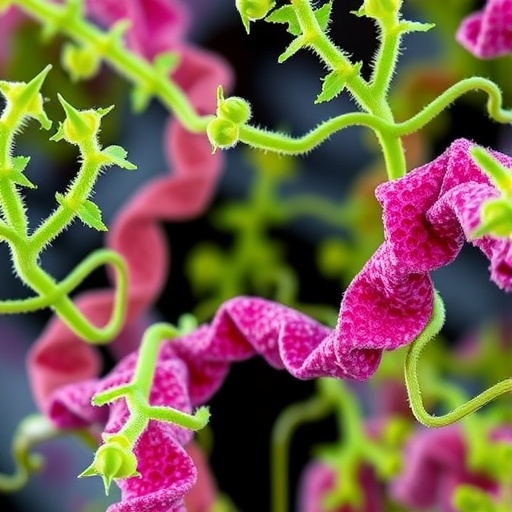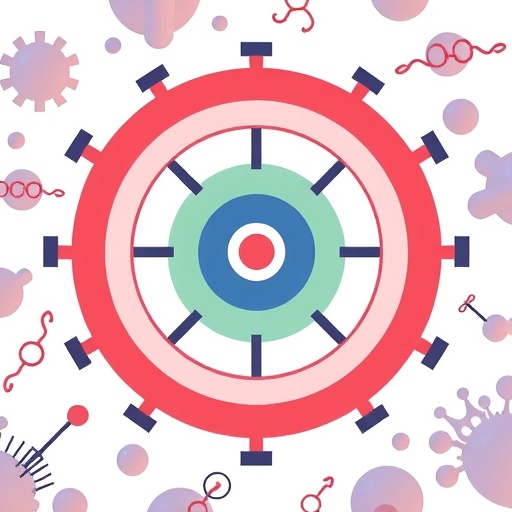Recent developments in the field of lincosamide biosynthesis have sparked a wave of interest within the scientific community. With the increasing global concern over antibiotic resistance, the exploration of naturally occurring antibiotics, such as lincomycin and celesticetin, has emerged as a critical area of research. The biosynthetic gene clusters (BGCs) associated with these compounds reveal intricate biological machinery that synthesizes these lincosamide antibiotics. The high degree of homology between the essential enzymes in the lmb and ccb BGCs opens the door for innovative strategies in the combinatorial biosynthesis of new chimeric antibiotics. Such endeavors aim to enhance the pharmacological properties of lincosamides, with the ultimate goal of addressing the pressing issue of antibiotic resistance.
A pivotal aspect of the research into the molecular bases of lincosamide biosynthesis is the investigation of enzymatic functions and their specificities. By dissecting the roles of key enzymes, scientists are beginning to understand how these proteins work within the larger context of secondary metabolite production. The significant conservation of these enzymes across different biochemical pathways suggests that they may be promising targets for engineering modifications. This could allow for the development of biocatalysts capable of generating novel lincosamide derivatives, thus expanding the arsenal of available antibiotics. Such innovations could be crucial in combating infections caused by multi-drug resistant bacteria.
Among the early breakthroughs in this field was the detailed examination of the N-methyltransferase CcbJ in 2014. Structural analysis of CcbJ revealed intriguing features within its active site, which hinted at the possibility for substrate promiscuity. This discovery laid the groundwork for subsequent research that sought to exploit this promiscuity for producing diverse lincosamide analogs. The structural insights have prompted further investigations into other key enzymes in the pathway, signaling a broader attempt to understand the underlying mechanisms that control lincosamide biosynthesis.
Additionally, the study of other enzymes associated with the biosynthetic pathways, such as CcbD and LmbT, has also proven vital. As research has progressed, attention has turned to the homologous enzyme pairs CcbF and LmbF, which are thought to play complementary roles in the assembly of the lincosamide backbone. The exploration of these relationships and functions provides insight into the potential regulatory mechanisms governing antibiotic production in microbial populations. These intensified studies shed new light on the interconnectivity of enzymatic pathways and the possibility of synergistic effects that may arise from manipulating these systems.
The engineering of enzymes to create product specificity is another exciting avenue for advancing lincosamide antibiotics. By utilizing cutting-edge techniques in protein engineering and molecular biology, researchers are targeting specific amino acid residues within the enzymes to tailor their substrate profiles. These strategies may allow for the precise modification of lincosamide structures, which could lead to derivatives with enhanced efficacy or reduced side effects. This approach promises a transformative impact on antibiotic development, particularly as traditional methods often involve lengthy processes of natural product isolation and modification.
Moreover, the role of metabolite biosynthesis in broader ecological contexts cannot be understated. The production of lincosamide antibiotics by certain Actinobacteria serves both competitive and protective functions within their environments. Understanding these ecological interactions may inform biocontrol strategies in agricultural settings, where effective antimicrobial agents are needed to combat plant pathogens without harmful effects on beneficial microorganisms. Harnessing the power of natural antibiotic producers can lead to a more sustainable form of agriculture while maintaining crop health and yields.
As research into lincosamide biosynthesis continues to advance, investigators are also leveraging advanced computational tools and techniques. Systems biology approaches allow for the integration of genome sequencing data with metabolic modeling, providing a holistic view of antibiotic synthesis. This multidisciplinary strategy enhances our capability to design targeted experiments aimed at unraveling the complexities of lincosamide biosynthesis. As computational models refine predictions about enzyme functions and interactions, they pave the way for more informed experimental designs.
In light of the current public health crisis posed by antibiotic-resistant infections, the urgency for innovative antibiotic discovery is more pronounced than ever. Continued investigation into the mechanisms of biosynthesis, coupled with advances in synthetic biology, brings renewed hope for producing novel lincosamide derivatives. The potential chimeric products resulting from combining features of both lincomycin and celesticetin could represent a new class of antibiotics, broadened by their refinement via targeted enzymatic alterations.
Looking ahead, the relationship between biosynthetic capacities and therapeutic properties will remain a focal point of study. As scientists sift through the richness of microbial diversity, they stand poised to discover new biosynthetic pathways that may harbor untapped antibiotic potential. This exploration not only holds promise for the generation of effective treatments but also emphasizes the need for a deeper understanding of microbial interactions and their contributions to health.
In conclusion, the ongoing research into lincosamide biosynthesis reflects a dynamic intersection of molecular biology, ecology, and therapeutic development. As scientists unravel the complex networks of biosynthetic enzymes, possibilities for novel antibiotic strategies expand exponentially. The collaborative efforts of researchers in this field are critical, as they aim to unlock the full potential of lincosamide antibiotics while addressing one of the most significant challenges of our time—antibiotic resistance. It is this dedication to exploration and innovation that will drive the next wave of antibiotic discovery, ensuring that we remain steps ahead in the fight against infectious diseases.
Subject of Research: Lincosamide Biosynthesis and Antibiotic Resistance
Article Title: Recent Advances in Lincosamide Biosynthetic Studies
Article References:
Yang, Y., Mori, T. Recent advances in lincosamide biosynthetic studies.
J Antibiot (2025). https://doi.org/10.1038/s41429-025-00884-x
Image Credits: AI Generated
DOI: 10.1038/s41429-025-00884-x
Keywords: Lincosamide, Antibiotic Resistance, Biosynthesis, Enzymatic Engineering, Combinatorial Biosynthesis
Tags: antibiotic resistance solutionsbiocatalysts for antibiotic developmentbiosynthetic gene clusterschimeric antibiotics developmentcombinatorial biosynthesis strategiesengineering enzyme modificationsenzymatic functions in biosynthesislincomycin and celesticetinlincosamide biosynthesis researchnovel lincosamide derivativespharmacological properties of lincosamidessecondary metabolite production





